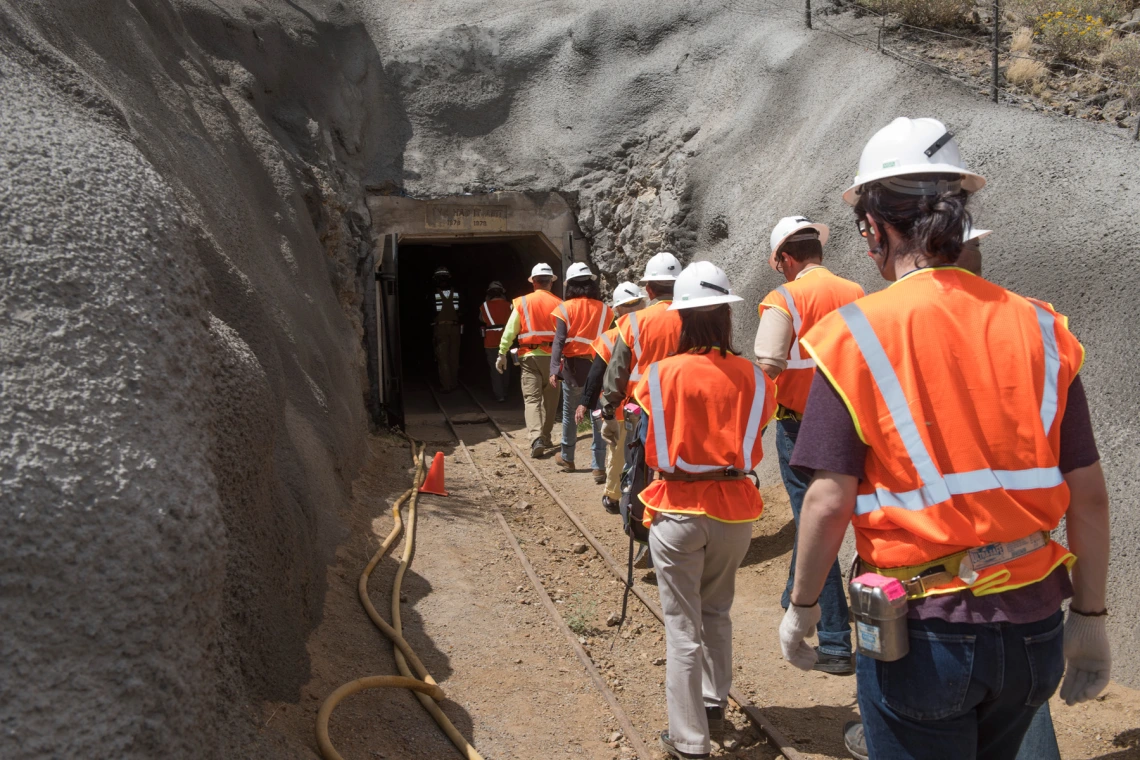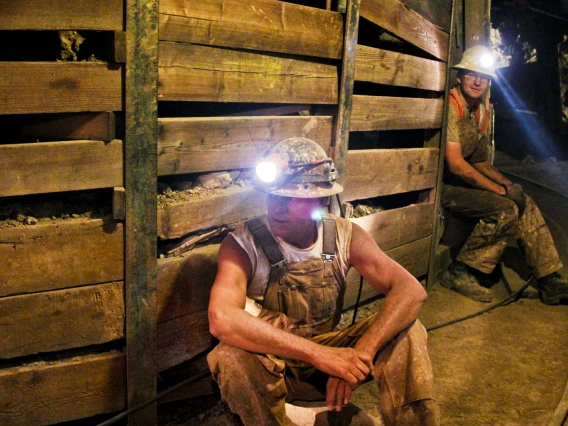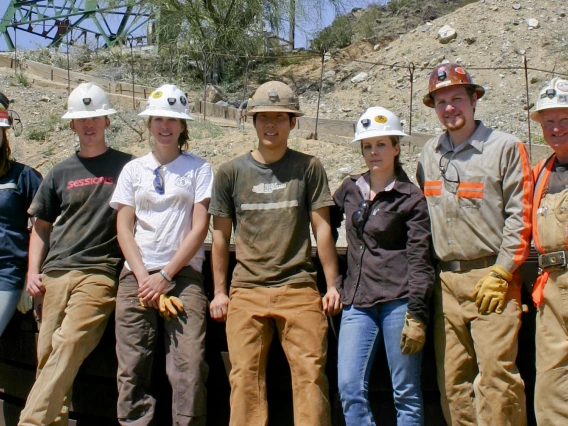AZ Tech Council Members Deepen Their Knowledge of Modern Mining Industry
Members of the Arizona Technology Council learned about today’s world of mining engineering when they spent an afternoon at the University of Arizona-owned San Xavier mine.

AZ Tech Council Members put on their hard hats and head underground. (Photo: Chris Mooney)
Not many people are familiar with the modern technology and sophisticated methods used by today’s mining engineers. But members of the Arizona Technology Council recently had the opportunity to go deep into the world of mining. More than 100 feet deep, actually. During an afternoon co-hosted by AZTC and the College of Engineering’s Department of Mining and Geological Engineering, or MGE, tech council members explored the Henry G. "Hank" Grundstedt San Xavier Underground Mining Laboratory for themselves.
“It was just the perfect opportunity to talk about the incredible advances in technology in the mining world, and that’s exactly what we did,” said Jeff Sales, executive director of AZTC’s Southern Arizona regional office. “Our people have no clue that the university has an underground mine that they use to teach students mining.”
Now, approximately 40 AZTC members, including representatives from Dataforth, Marcus Engineering and Digital Video Networks, certainly have a clue. Having spent the day exploring the mine, hearing about university research projects and being bussed down the road to tour the Komatsu proving grounds, they’re armed with knowledge about the modern, high-tech mining industry.
John Kemeny, head of the Department of Mining and Geological Engineering, opened the event with a speech about the mine and department surrounding it, which he explained is well-positioned for a number of reasons: It’s within a university where researchers are investigating any number of technologies that could be applicable to mining, like autonomous vehicles and sustainability. It’s in Tucson, which is turning into something of a hive for high-tech mining companies such as Hexagon, Komatsu and Caterpillar. And it’s in Arizona, the No. 1 producer of copper in the United States and home to some of the biggest mines in the world.
“We’re small, but vital to the University, and also to the state of Arizona and the mining industry,” he said.
Johnny Lyons-Baral, an assistant professor of practice at UA and a senior application engineer at Hexagon, demonstrated Hexagon’s radar system with a group of UA Engineering seniors.
“It was fun to talk about how technologies like radar are being applied to geology and blasting and hearing how it compares to, say, the defense industry,” he said, adding that conversations like these present opportunities for collaboration across industries. “It would be especially exciting if other industries could start seeing ways to incorporate their environmental technologies into mining.”
Nearly 50 mining students were present, and they were the researchers behind many of the projects on display. One team, for instance, displayed a poster about their entry and second-place win in an international student mine design competition. Students also provided a demonstration of a jackleg drill.
“It was a fantastic opportunity to showcase not just the industry, but the MGE department’s role in playing a part in the innovation in that industry,” said Steve Holmes, vice president of Barrick Gold and member of the MGE Industry Leadership Board.
Students, faculty, mining industry representatives and tech council members found common ground in the new frontier of mining, as well as in the mine’s trademark barbecue that was served during the event.
“I really enjoyed watching the people gaining a deeper understanding of the industry and of engineering, and how the UA College of Engineering and the mining department play a key role in making sure that industry stays well represented,” Holmes said. “I think when they left, the Tech Council had a much clearer view of mining as an industry, and how the university plays a key role in providing future generations of leaders.”



